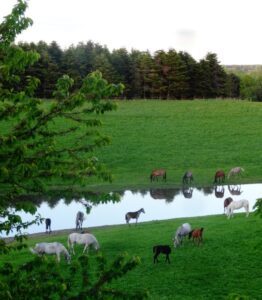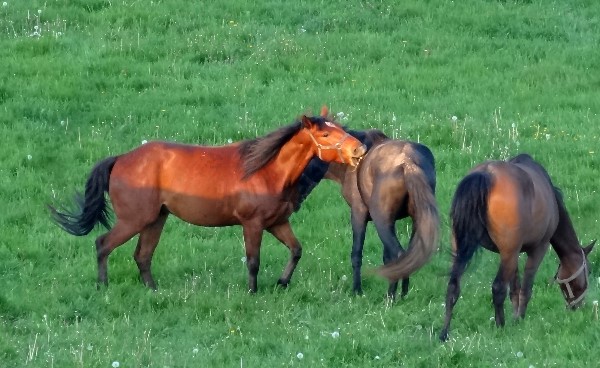Actually, it is exactly the same in our human societies. You are more inclined to follow someone you think capable of handling a government, a company, a team or whatever. But the day this person does not perform correctly, makes mistakes and gets lost, you can not trust him or her anymore and either you choose a new leader or you become one yourself.
Horses societies have their own structures and although that is not the subject of this post, some information deserve to be known:
- a herd is not composed of one supreme leader followed by all other members, but horses define their own status depending on their relationship with each and every other horse in the herd;
- horses of higher rank have the prior right to everything (food, water, other horses, etc.) and other horses are supposed to yield in front them;
- a leading horse, by definition, takes decisions and does not wait for any advice.

How to translate this into a better communication with my horse?
First, you should find out if your horse tends to be a natural leader or follower. A leader will crowd you, push you, will not wait for you, will go before you when lead on a rope, will look all around, etc. On the contrary, a follower will tend to be more spooky, to back up often to avoid pressure, and so on.
Once you know to which category your horse belongs, you can start its education. The fundamental groundwork exercises are a good start: desensitizing, backing up and lungeing.
Yet, education is a non-stop process and you should keep in mind that you horse learns from every situation: if you teach your horse to back up for 45 minutes in the arena with great results but you let it walk over you when heading back to the stable, then you have lost your time and your credibility. Three easy principles that you can keep in mind will help you to sustain your established leadership: do not ever back up, direct your horse instead of being dragged, and the first that moves is a loser.
1 – Do not ever back up.
During the exercises, you have to be consistent with this rule and make sure your horse is the one to back up all the time _ except if your life is endangered but that post is not the most important thing to know if you start a bronco right now. Moreover, it is a very good idea to practice the back up exercise everywhere, all the time: when you walk from the pasture to the arena, in the stables, when you groom your horse, when you saddle it, etc. Every opportunity to back your horse up is good for your establishing leadership on the long run.
2 – Direct your horse instead of being dragged.
You have certainly experienced your horse dragging you to the gate of the arena, or to the place that is the closest to the herd waiting outside or in the stables. When riding, it probably happened that your horse wanted to move to a particular location without your agreement. Those are the situations you want to avoid: wherever you go with a horse, you ought to have chosen the final destination. On the ground, when longeing for instance, make sure you choose the initial spot in the arena where you work and do the necessary to stay there. Your horse will try to drag you elsewhere first, resist and bring it back to the first location. Under the saddle, if a horse denies you the right to turn in a specific direction, make sure you insist and you do not give up until the said direction is taken. When you are stopped, keep in mind the rectangle: your horse should not walk out of the rectangle without your permission.
3 – The first that moves is a loser.
When you ride, the principle is the same: you want your horse to wait for you, it should not go without you, nor stop if not asked by you. Finally, please remember: being a good leader is not being a tyrant, so be firm and consistent but never hard or violent. That is the way to leadership by respect!


 ENGLISH
ENGLISH DEUTSCH
DEUTSCH ESPAÑOL
ESPAÑOL FRANÇAIS
FRANÇAIS